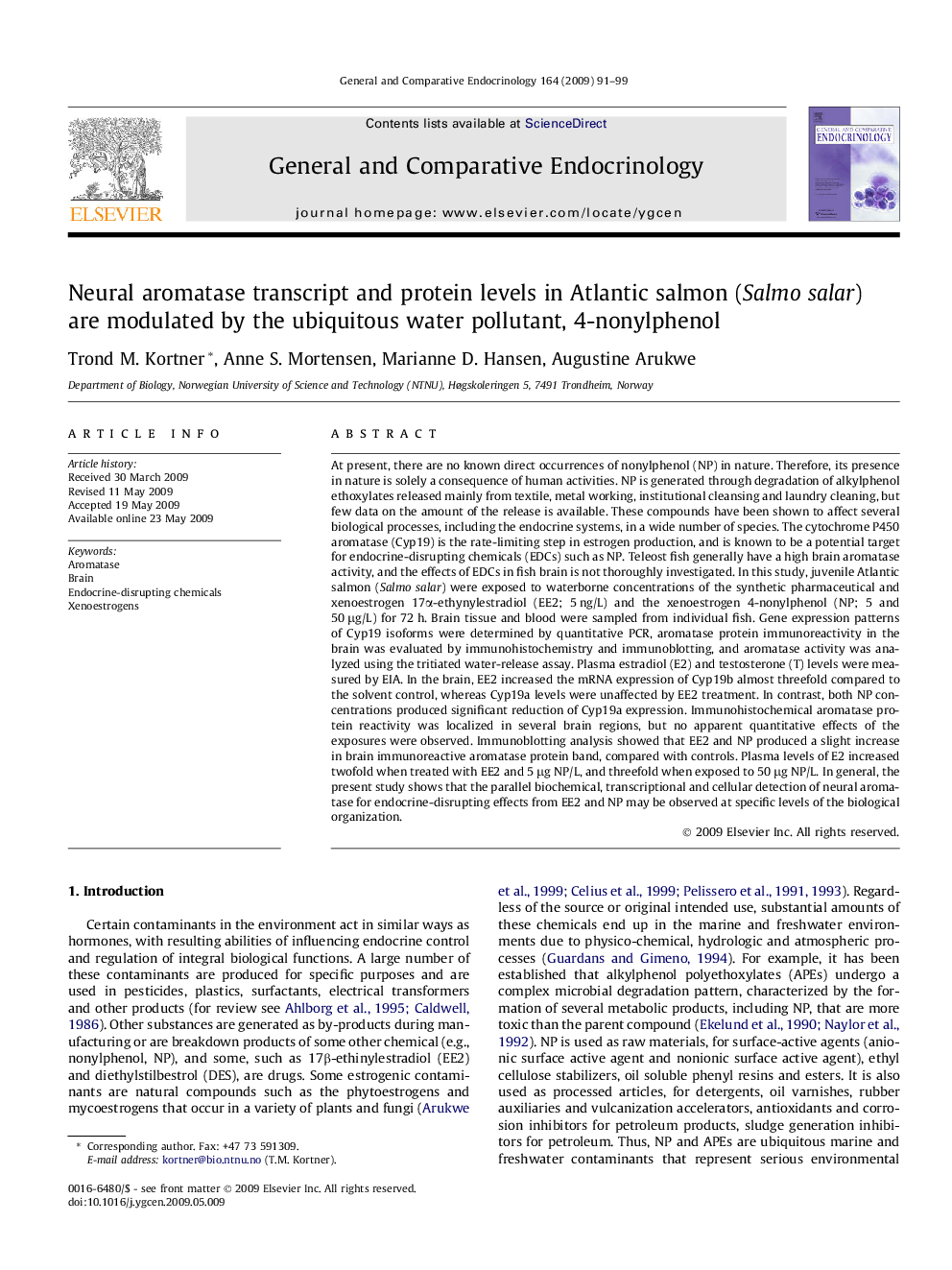| کد مقاله | کد نشریه | سال انتشار | مقاله انگلیسی | نسخه تمام متن |
|---|---|---|---|---|
| 2801209 | 1156147 | 2009 | 9 صفحه PDF | دانلود رایگان |

At present, there are no known direct occurrences of nonylphenol (NP) in nature. Therefore, its presence in nature is solely a consequence of human activities. NP is generated through degradation of alkylphenol ethoxylates released mainly from textile, metal working, institutional cleansing and laundry cleaning, but few data on the amount of the release is available. These compounds have been shown to affect several biological processes, including the endocrine systems, in a wide number of species. The cytochrome P450 aromatase (Cyp19) is the rate-limiting step in estrogen production, and is known to be a potential target for endocrine-disrupting chemicals (EDCs) such as NP. Teleost fish generally have a high brain aromatase activity, and the effects of EDCs in fish brain is not thoroughly investigated. In this study, juvenile Atlantic salmon (Salmo salar) were exposed to waterborne concentrations of the synthetic pharmaceutical and xenoestrogen 17α-ethynylestradiol (EE2; 5 ng/L) and the xenoestrogen 4-nonylphenol (NP; 5 and 50 μg/L) for 72 h. Brain tissue and blood were sampled from individual fish. Gene expression patterns of Cyp19 isoforms were determined by quantitative PCR, aromatase protein immunoreactivity in the brain was evaluated by immunohistochemistry and immunoblotting, and aromatase activity was analyzed using the tritiated water-release assay. Plasma estradiol (E2) and testosterone (T) levels were measured by EIA. In the brain, EE2 increased the mRNA expression of Cyp19b almost threefold compared to the solvent control, whereas Cyp19a levels were unaffected by EE2 treatment. In contrast, both NP concentrations produced significant reduction of Cyp19a expression. Immunohistochemical aromatase protein reactivity was localized in several brain regions, but no apparent quantitative effects of the exposures were observed. Immunoblotting analysis showed that EE2 and NP produced a slight increase in brain immunoreactive aromatase protein band, compared with controls. Plasma levels of E2 increased twofold when treated with EE2 and 5 μg NP/L, and threefold when exposed to 50 μg NP/L. In general, the present study shows that the parallel biochemical, transcriptional and cellular detection of neural aromatase for endocrine-disrupting effects from EE2 and NP may be observed at specific levels of the biological organization.
Journal: General and Comparative Endocrinology - Volume 164, Issue 1, October 2009, Pages 91–99